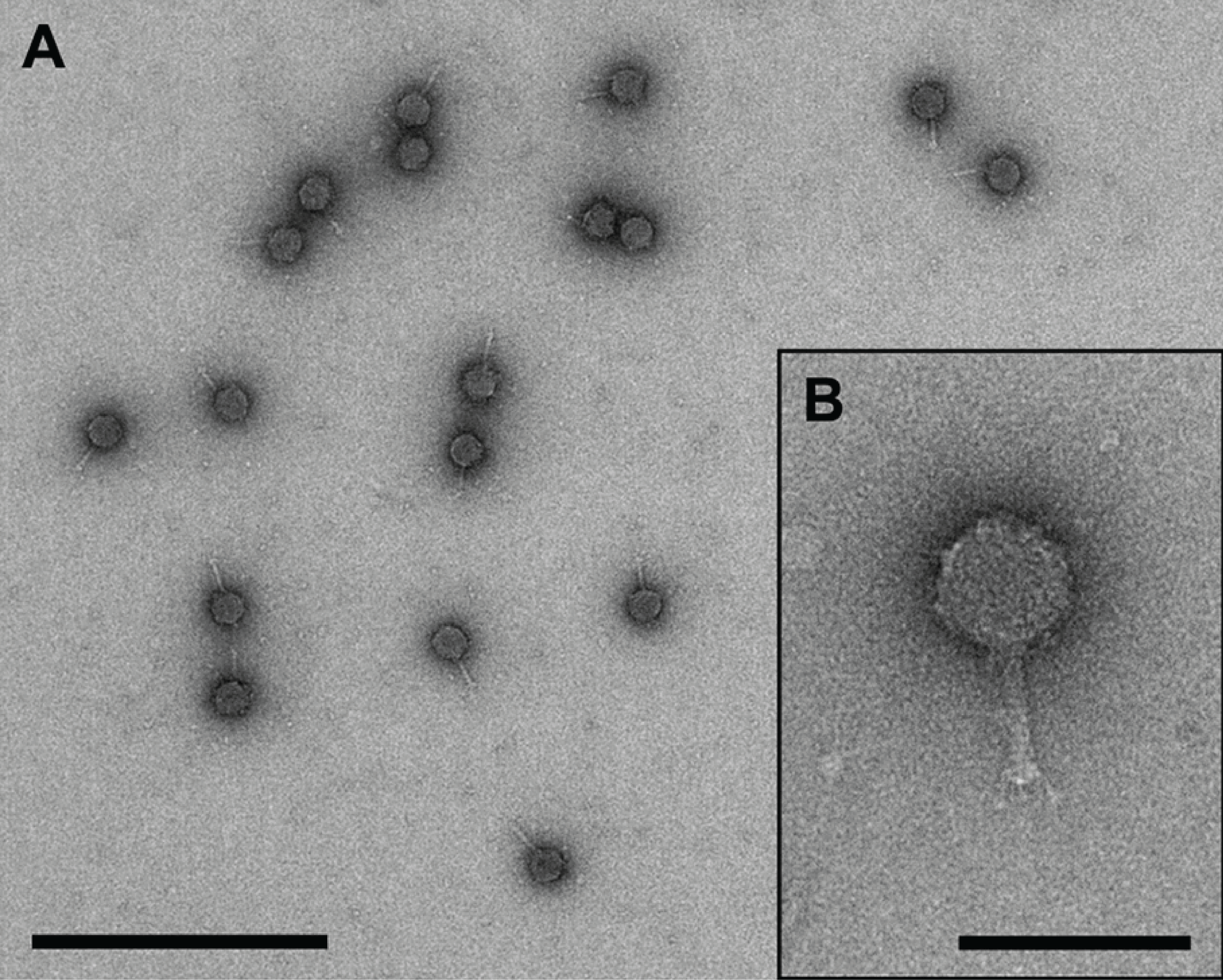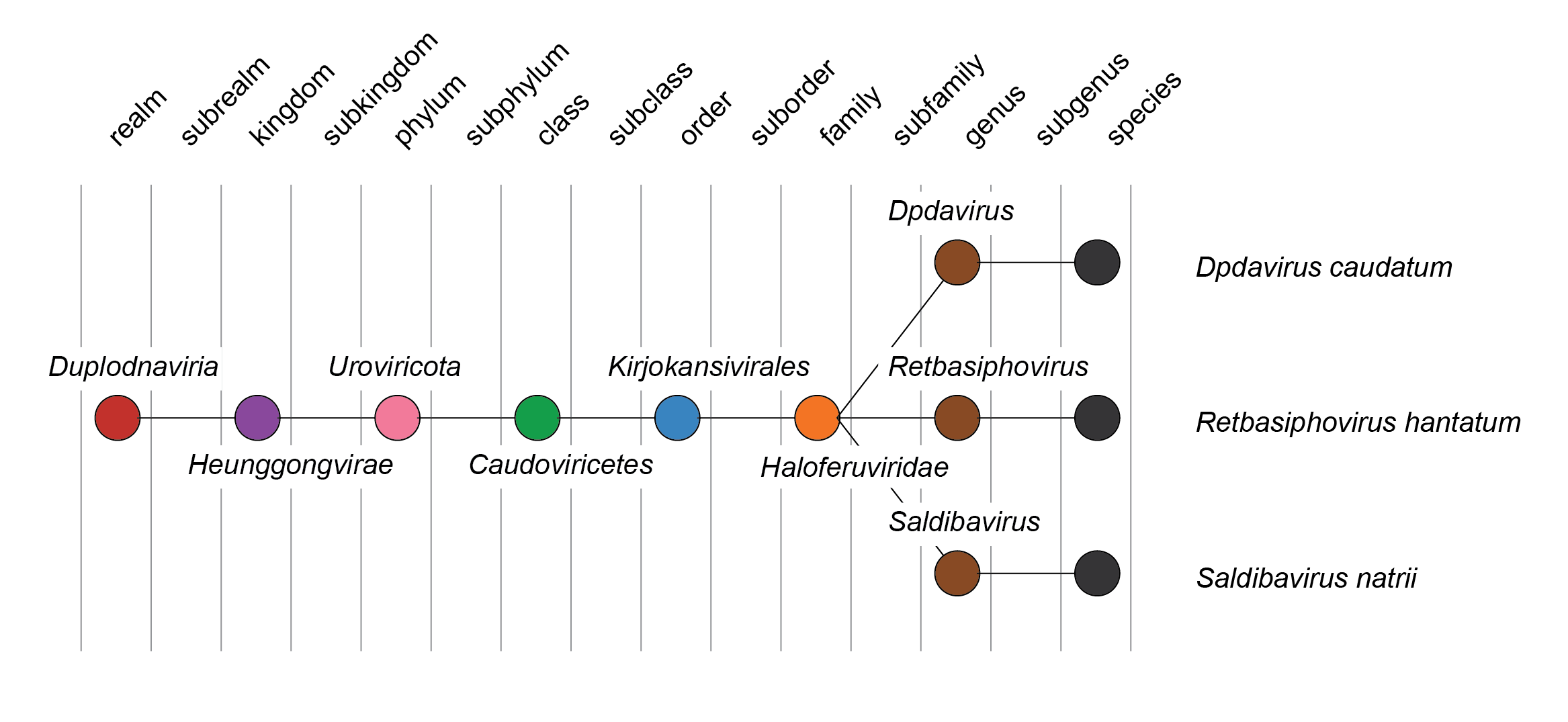Family: Haloferuviridae (Interim Report)
This is a summary page created by the ICTV Report Editors using information from associated Taxonomic Proposals and the Master Species List.
Edited by: Mart Krupovic
Posted: October 2023, updated December 2024
Summary
The family Haloferuviridae includes dsDNA viruses infecting hyperhalophilic archaea of Haloferax and Halorubrum sp. (Table 1 Haloferuviridae). The family Haloferuviridae was established in 2022 (Master Species List 37).
Table 1 Haloferuviridae. Characteristics of members of the family Haloferuviridae.
| Characteristic | Description |
| Example | Haloferax tailed virus 1 (MG550112), species Retbasiphovirus hantatum, genus Retbasiphovirus |
| Virion | Icosahedral capsid (50 nm) with long non-contractile tail (60 nm) (siphovirus-like morphology) (Figure 1 Haloferuviridae) |
| Genome | Linear, dsDNA genome of 35–38 kbp, circularly permuted (Figure 2 Haloferuviridae) |
| Host range | Hyperhalophilic archaea of Haloferax and Halorubrum sp. |
| Taxonomy | Realm Duplodnaviria, kingdom Heunggongvirae, phylum Uroviricota, class Caudoviricetes, order Kirjokansivirales: 3 genera and 3 species (Figure 3 Haloferuviridae) |
 |
| Figure 1 Haloferuviridae. (A) Transmission electron microscopy of negatively-stained 2× purified Haloferax tailed virus 1. Scale bar, 500 nm. (B) Inset to panel A. Scale bar, 100 nm. Images from Schwarzer et al., (2023) "Archaeal host cell recognition and viral binding of HFTV1 to its Haloferax host" mBio 14:e01833-22 under a Creative Commons Attribution 4.0 International License. |
 |
| Figure 2 Haloferuviridae. Genome organisation of Halorubrum tailed virus 29, a member of the family Haloferuviridae. Boxes indicate open reading frames as annotated on GenBank accession MG550112. |
 |
| Figure 3 Haloferuviridae. Taxonomy of the family Haloferuviridae. |
Derivation of name
Haloferuviridae: Referring to the hosts; truncation of Haloferax and Halorubrum

